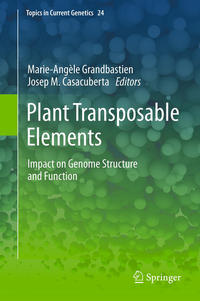
Transposable elements are short lengths of DNA with the capacity to move between different points within a genome. This process can affect the function of genes at or near the insertion site. The present book gives an overview of the impact of transposable elements on plant genomes and explains how to recognize and study transposable elements, e.g. by using state-of-the-art strategies like “new generation sequencing.” Moreover, the impact of transposable elements on plant genome structure and function is reviewed in detail, and also illustrated in examples and case studies. The book is intended both for readers familiar with the field and for newcomers. With large-scale sequencing becoming increasingly available, more and more people will come across transposable element sequences in their data, and this volume will hopefully help to convince them that they are not just “junk DNA.”